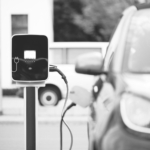Whether you bought an EV to help tackle climate change or to save more money when gas prices are hugging the roof, taking care of its battery is essential. And why not?
Batteries are the only power source for EVs, enabling them to take you on your road trips and help you commute. While it is claimed that these batteries can last for around 10-20 years but their life will be drastically reduced if you neglect taking proper care of them.
A shorter battery life means you’ll be rather spending heftily to change the batteries than saving more money.
So, join us in outlining proven tips that help EV batteries last longer.
Update Your Vehicle’s Software (for Tesla EV Owners)
Back in 2017, Tesla released a software update that boosted the battery life of their EVs and added a range of 30-40 miles more.
Software updates coupled with fine engineering can help increase the battery life of electric cars. EVs use a Battery Management System (BMS) to efficiently manage the battery cells. Optimizing BMS using software helps in the enhancement of battery health.
If you’re a Tesla owner you may receive software updates like these in the future.
The updates are usually huge in size. They may take longer if you have sluggish internet at your home which can jeopardize your schedule. Explore Spectrum; it is considered one of the most reliable internet service providers in the States with speeds up to a whopping 1 Gig.
The software is smart enough and can lock the battery charging to 80%. Overcharging the batteries degrades them. This will help avoid overcharging your car’s batteries and keep them healthy.
All in all, keep checking your car for new software updates and install them for efficient battery management.
Try Shunning the Extreme Temperatures
The batteries are designed to work in normal temperatures ranging from 59-86 degrees Fahrenheit. Whether you’ll be operating them in a too hot or cold climate, their performance will take a dip.
In the States, the weather is mostly cold and that can decrease the efficiency of the battery packs along with degrading them.
OK. So, what you can do is let the car’s thermal management system play. A thermal management system of a car can help the batteries stay in their comfort zone and at ideal temperature.
Also, fast chargers can overheat your batteries if the weather is already extremely hot. You can use a fast charger when you are running late for a meeting or a flight. But when you got the time, it is recommended to charge your electric vehicle using a normal AC adapter.
Not to forget, when it’s hot out there and you have to park your car, try parking it under a shade to enhance the battery’s effectiveness.
So, make sure you use the car’s thermal management system and also avoid ultra-fast charging when you can.
Avoid Charging to 100%
Here is the thing, charging your battery to 100% is satisfying for sure but just for you and not the batteries. Those Li-ion cells hate when they are being charged to 100%.
When the batteries are charged to 100%, their volatility is increased and the more they are volatile, the shorter their life span becomes.
What’s the ideal battery charge percentage?
80% is the maximum that you should charge your batteries. You can truce from it, if you have to go on a longer journey. But for the regular days, charge it to 80%.
And it’s not only true for car batteries but any other battery. Li-ion batteries behave the same all across. You should charge your phone, laptop, and other devices less than 100% if you want to enhance their life span.
You might have noticed when you use a fast charger they slow down at 80%. And charging from 80-100% takes more minutes than 20-80%. The EVs’ charging systems are smart enough. The charging slows down at 80% to preserve the batteries and reduce the risk of volatility.
You should be smart too to boost the health of your vehicle’s batteries.
Drive Your EV and Don’t Let It’s Battery Die
A combustion engine car and an electric vehicle mimic the same behavior when they are left undriven for a longer duration. The difference is that the EVs have batteries that discharge even when not driven.
When the battery’s power is sucked to bits they degrade. And when you leave it in your garage for weeks the batteries can drop to 0%.
How to avoid EV batteries dropping to 0%?
Many EVs provide a feature of trickle charge. A trickle charge charges the battery pretty slowly. It will stop when the battery gets charged to a certain percentage and will initiate charging again when it is discharged to a specific level you have set.
Look out for the trickle charge, plug your car in, and turn it on when you’ll be going for a long vacation to your favorite destination.
Summing Up
EVs are a great invention. But conserving the battery health is a real hassle if you want to keep your car for a long time. Scientists are at work to create a battery that can be termed as non-degrading. Will we see those batteries in electric cars sooner? The time will tell. Until then you can use our tips to increase the battery life of your EV.





